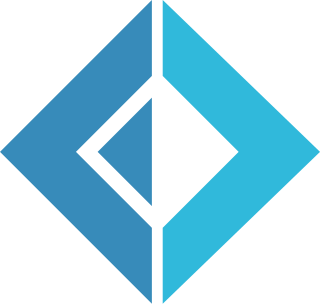In computer science, functional programming is a programming paradigm where programs are constructed by applying and composing functions. It is a declarative programming paradigm in which function definitions are trees of expressions that map values to other values, rather than a sequence of imperative statements which update the running state of the program.
ML is a general-purpose, high-level, functional programming language. It is known for its use of the polymorphic Hindley–Milner type system, which automatically assigns the data types of most expressions without requiring explicit type annotations, and ensures type safety; there is a formal proof that a well-typed ML program does not cause runtime type errors. ML provides pattern matching for function arguments, garbage collection, imperative programming, call-by-value and currying. While a general-purpose programming language, ML is used heavily in programming language research and is one of the few languages to be completely specified and verified using formal semantics. Its types and pattern matching make it well-suited and commonly used to operate on other formal languages, such as in compiler writing, automated theorem proving, and formal verification.
OCaml is a general-purpose, high-level, multi-paradigm programming language which extends the Caml dialect of ML with object-oriented features. OCaml was created in 1996 by Xavier Leroy, Jérôme Vouillon, Damien Doligez, Didier Rémy, Ascánder Suárez, and others.
Standard ML (SML) is a general-purpose, high-level, modular, functional programming language with compile-time type checking and type inference. It is popular for writing compilers, for programming language research, and for developing theorem provers.
In combinatory logic for computer science, a fixed-point combinator, is a higher-order function that returns some fixed point of its argument function, if one exists.

F# is a general-purpose, high-level, strongly typed, multi-paradigm programming language that encompasses functional, imperative, and object-oriented programming methods. It is most often used as a cross-platform Common Language Infrastructure (CLI) language on .NET, but can also generate JavaScript and graphics processing unit (GPU) code.
In mathematics and computer science, a higher-order function (HOF) is a function that does at least one of the following:
In complex analysis, the Hardy spacesHp are certain spaces of holomorphic functions on the unit disk or upper half plane. They were introduced by Frigyes Riesz, who named them after G. H. Hardy, because of the paper. In real analysis Hardy spaces are certain spaces of distributions on the real line, which are boundary values of the holomorphic functions of the complex Hardy spaces, and are related to the Lp spaces of functional analysis. For 1 ≤ p < ∞ these real Hardy spaces Hp are certain subsets of Lp, while for p < 1 the Lp spaces have some undesirable properties, and the Hardy spaces are much better behaved.
In computing, memoization or memoisation is an optimization technique used primarily to speed up computer programs by storing the results of expensive function calls to pure functions and returning the cached result when the same inputs occur again. Memoization has also been used in other contexts, such as in simple mutually recursive descent parsing. It is a type of caching, distinct from other forms of caching such as buffering and page replacement. In the context of some logic programming languages, memoization is also known as tabling.
In functional programming, continuation-passing style (CPS) is a style of programming in which control is passed explicitly in the form of a continuation. This is contrasted with direct style, which is the usual style of programming. Gerald Jay Sussman and Guy L. Steele, Jr. coined the phrase in AI Memo 349 (1975), which sets out the first version of the Scheme programming language. John C. Reynolds gives a detailed account of the numerous discoveries of continuations.
Camlp4 is a software system for writing extensible parsers for programming languages. It provides a set of OCaml libraries that are used to define grammars as well as loadable syntax extensions of such grammars. Camlp4 stands for Caml Preprocessor and Pretty-Printer and one of its most important applications was the definition of domain-specific extensions of the syntax of OCaml.
In programming languages and type theory, parametric polymorphism allows a single piece of code to be given a "generic" type, using variables in place of actual types, and then instantiated with particular types as needed. Parametrically polymorphic functions and data types are sometimes called generic functions and generic datatypes, respectively, and they form the basis of generic programming.
JoCaml is an experimental general-purpose, high-level, multi-paradigm, functional and object-oriented programming language derived from OCaml. It integrates the primitives of the join-calculus to enable flexible, type-checked concurrent and distributed programming. The current version of JoCaml is a re-implementation of the now unmaintained JoCaml made by Fabrice Le Fessant, featuring a modified syntax and improved OCaml compatibility compared to the original.
A structural type system is a major class of type systems in which type compatibility and equivalence are determined by the type's actual structure or definition and not by other characteristics such as its name or place of declaration. Structural systems are used to determine if types are equivalent and whether a type is a subtype of another. It contrasts with nominative systems, where comparisons are based on the names of the types or explicit declarations, and duck typing, in which only the part of the structure accessed at runtime is checked for compatibility.
Haxe is a high-level cross-platform programming language and compiler that can produce applications and source code for many different computing platforms from one code-base. It is free and open-source software, released under the MIT License. The compiler, written in OCaml, is released under the GNU General Public License (GPL) version 2.
In computer programming, an anonymous function is a function definition that is not bound to an identifier. Anonymous functions are often arguments being passed to higher-order functions or used for constructing the result of a higher-order function that needs to return a function. If the function is only used once, or a limited number of times, an anonymous function may be syntactically lighter than using a named function. Anonymous functions are ubiquitous in functional programming languages and other languages with first-class functions, where they fulfil the same role for the function type as literals do for other data types.

In computing, ATS is a programming language designed by Hongwei Xi to unify computer programming with formal specification. ATS has support for combining theorem proving with practical programming through the use of advanced type systems. A past version of The Computer Language Benchmarks Game has demonstrated that the performance of ATS is comparable to that of the languages C and C++. By using theorem proving and strict type checking, the compiler can detect and prove that its implemented functions are not susceptible to bugs such as division by zero, memory leaks, buffer overflow, and other forms of memory corruption by verifying pointer arithmetic and reference counting before the program compiles. Also, by using the integrated theorem-proving system of ATS (ATS/LF), the programmer may make use of static constructs that are intertwined with the operative code to prove that a function conforms to its specification.
In mathematics, Sobolev spaces for planar domains are one of the principal techniques used in the theory of partial differential equations for solving the Dirichlet and Neumann boundary value problems for the Laplacian in a bounded domain in the plane with smooth boundary. The methods use the theory of bounded operators on Hilbert space. They can be used to deduce regularity properties of solutions and to solve the corresponding eigenvalue problems.
Join-patterns provides a way to write concurrent, parallel and distributed computer programs by message passing. Compared to the use of threads and locks, this is a high level programming model using communication constructs model to abstract the complexity of concurrent environment and to allow scalability. Its focus is on the execution of a chord between messages atomically consumed from a group of channels.

F* is a high-level, multi-paradigm, functional and object-oriented programming language inspired by the languages ML, Caml, and OCaml, and intended for program verification. It is a joint project of Microsoft Research, and the French Institute for Research in Computer Science and Automation (Inria). Its type system includes dependent types, monadic effects, and refinement types. This allows expressing precise specifications for programs, including functional correctness and security properties. The F* type-checker aims to prove that programs meet their specifications using a combination of satisfiability modulo theories (SMT) solving and manual proofs. For execution, programs written in F* can be translated to OCaml, F#, C, WebAssembly, or assembly language. Prior F* versions could also be translated to JavaScript.






